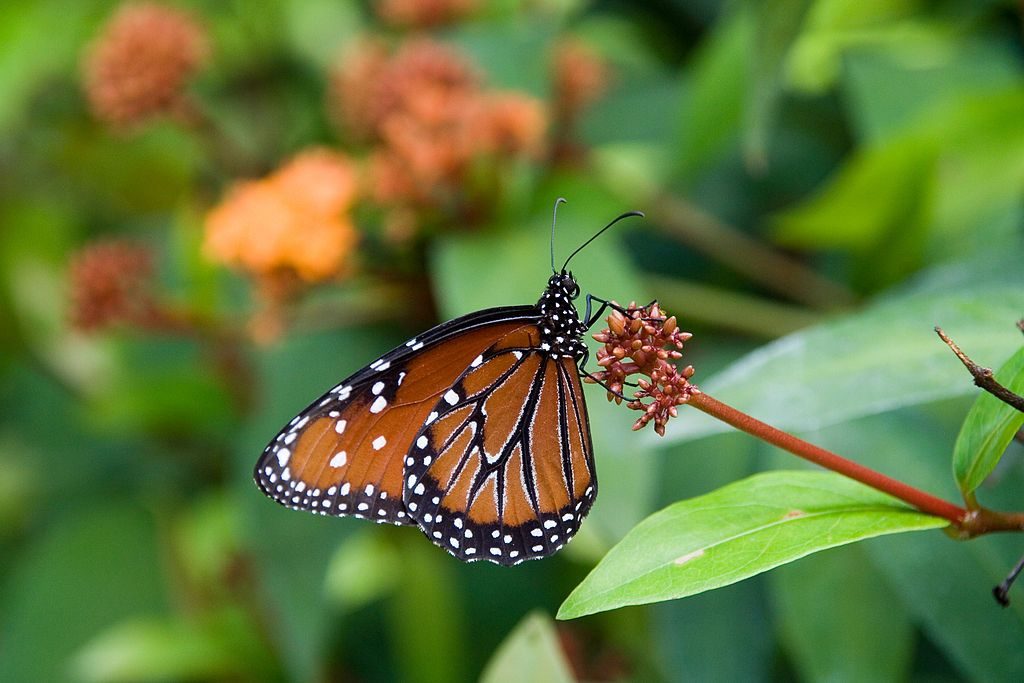
Viceroy butterflies (right) mimic monarchs (left) and queen butterflies (below) because monarchs and queens taste terrible.
According to the Batesian mimicry theory, viceroys resemble inedible butterflies to protect themselves from being eaten.

But what happens when there are no monarchs or queen butterflies around and the local predators learn that viceroys are safe to eat? The viceroys change their tactics.
A 15 year study in northern Florida — where queen butterflies don’t live — found that in the absence of queens the viceroys retain a chemical in their bodies that makes them taste sour. Thus they aren’t eaten. In fact they thrive.
Viceroys are different in the absence of royalty.
Read more at “A tasty Florida butterfly turns sour” in Science Daily.
(photos from Wikimedia Commons, click on the captions to see the original)
Are Viceroy butterflies common here? How would one tell them apart from Monarchs?
Love all your blog post! So interesting and informative. Thank you.
Betty, viceroys are not as common. You can tell them apart from monarchs because viceroys have a “smile” line on their lower wings. Here’s a website that explains it: https://www.saveourmonarchs.org/blog/monarch-lookalikes-and-how-to-tell-the-difference